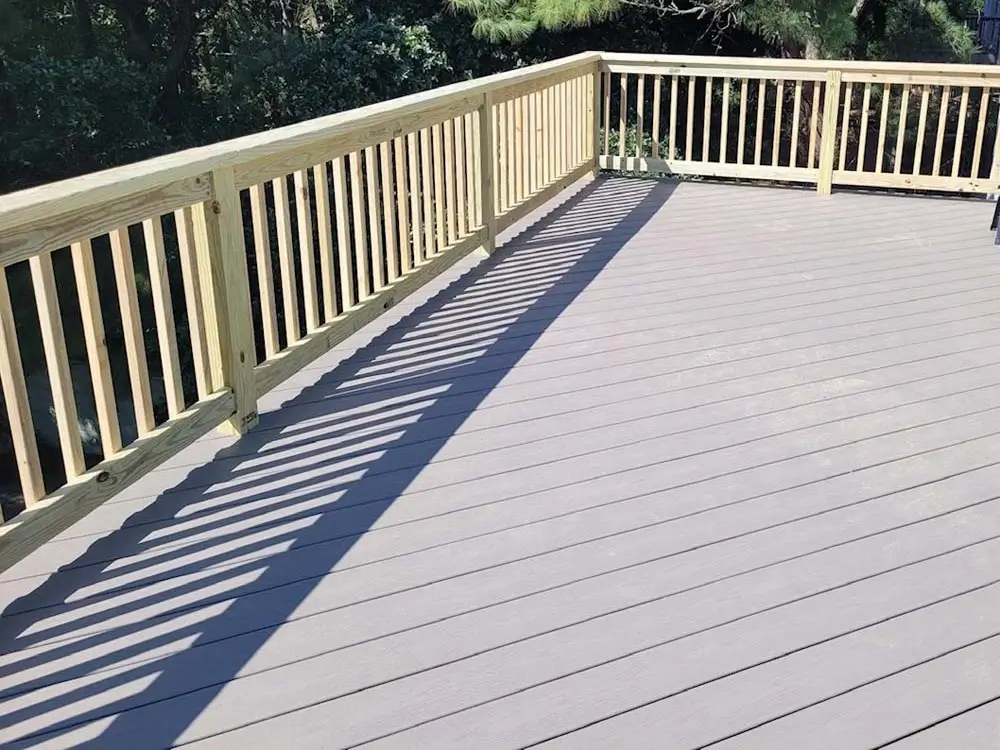Is it that time when you’re thinking about your deck and patio maintenance? Maintaining your deck is a normal process. It’s necessary and you can consider it an investment. With proper maintenance you can be sure that your outdoor space will survive the winter and it will be ready to go to next spring.
What is Deck Resurfacing?
Deck resurfacing is the process of replacing the deck boards, railings and/or stairs on existing deck frame and foundation. There are a number of reasons someone might wish to resurface a deck:
The deck isn’t that old but has not been well maintained so the surface boards are weather worn.
The deck surface is fine but the railings or stairs are in disrepair or unsafe.
You purchase an existing home but do not like the finish or materials used for the deck surface.
Deck resurfacing can be an excellent way to spruce up an existing deck for a reasonable investment. Resurfacing can be a great fall project because these projects can be finished in a shorter time-frame.
In this blog post we’ll describe the process of resurfacing a deck and we will talk about the best way to resurface your deck.
1. Assess the condition of your deck
Before you do anything, the first and most important thing is to take a look at your current deck to find out what its condition is. If the structure is pretty strong and just the surface is damaged, then resurfacing it is a good idea. But, if your deck has some major structural problems then you’ll need a new deck. Assessments can be done by you or to be more precise you can hire a professional deck builder to do it for you. Some deck builder offer free estimates too that would benefit you.
2. Choose the right resurfacing material
After you determined that your deck can be resurfaced, the next step is to choose the right material. There are a few different options to choose from and they all have their own advantages and disadvantages depending on the state and climate you live in.
- Wood – this is a great option if you are looking for a natural look. It’s a traditional material for decks and it looks really beautiful but you should keep in mind that wood is susceptible to rot and insect damage. This is why it requires regular maintenance.
- Composite – this material is combination of wood and plastic fibers. It’s more durable than wood and required less maintenance. The downside is that it can be more expensive and wood.
- Vinyl – this is a low maintenance option and this material is available in many colors. The downside of this material is that it can be slippery when wet and can become brittle in cold weather.
3. Prepare the surface
After you choose your resurfacing material, it’s time to prepare the surface of your deck. This step involves cleaning the deck with a pressure washer and sending any rough spots.
4. Apply the resurfacing material
This step depends on the material you choose for your deck resurfacing project. Be sure to follow the manufacturer’s instructions carefully.
5. Seal the deck
After the resurfacing material is applied, you’ll need to seal the deck to protect is from the elements.
Tips to resurfacing your deck
Avowing rushing. It’s best to start early in the spring or summer so you have time to complete the project before it gets cold outside.
- Choose a day with clear weather and low humidity.
- Wear safety glasses and gloves when you’re using power tools.
- Take your time and don’t rush the job. Every detail matters.
- Enjoy your beautiful new deck.
Resurfacing your deck is a great way to improve the look of your outdoor space. The best way to resurface your deck depends on the material and also on the homeowner’s budget and DIY skills. If you’re not sure what the best option for your deck is, you can always consult with a professional deck builder.
